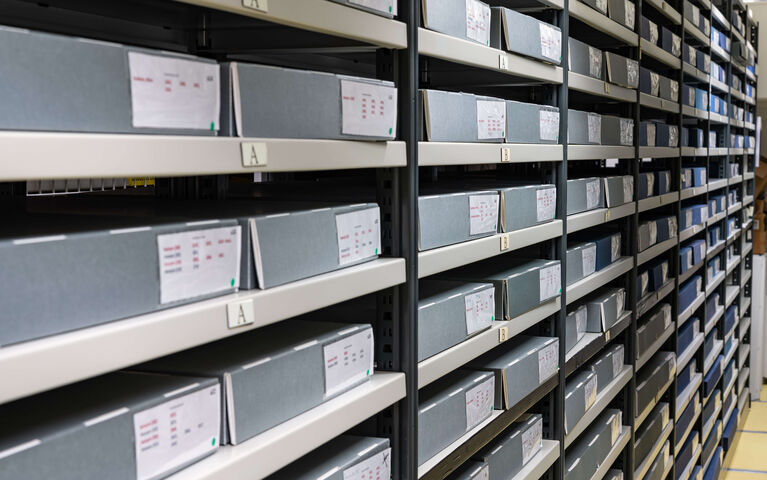About the Prinzhorn Collection
The original collection
The Prinzhorn Collection is a museum dedicated to art created by men and women with mental disorders. The unique body of the original collection is known worldwide and made up of approximately 6,000 works, all created by inmates of psychiatric institutions between 1840 and 1940. Pieces range from watercolours, drawings, paintings and sculptures to textile works and texts. The major part was collected while art historian and psychiatrist Hans Prinzhorn (1886–1933) worked as an assistant psychiatrist at the Psychiatric Hospital of Heidelberg University. Among the most famous artists and authors, whose works are held, are Else Blankenhorn, Franz Karl Bühler, Karl Genzel, Paul Goesch, Emma Hauck, August Klett, August Natterer, Agnes Richter, Joseph Schneller, Barbara Suckfüll and Adolf Wölfli.
The history of the collection
Between 1919 and 1921, letters were sent to psychiatric institutions in German speaking countries by Hans Prinzhorn and Karl Willmanns, then Head of the Psychiatric University Hospital. The artistic works of patients they asked for were destined for the creation of a museum of psychopathological art.
In 1922, Prinzhorn published his richly-illustrated book “Artistry of the Mentally Ill” based on the collection. Received enthusiastically by the art scene of his time, it immediately became “the Bible of the Surrealists”. The book was edited many times and translated into various languages. To this day, it remains a classic.
In 1938, Carl Schneider, Head of the Psychiatric University Hospital, ordered that works from the collection be sent to the Nazi touring exhibition “Entartete Kunst” (“Degenerate Art”). The works by mentally ill were exploited as references to imply the pathological nature of Modern art.
Being largely forgotten about after World War II, the Prinzhorn Collection was rediscovered by Harald Szeemann in 1963 and a selection was exhibited in Switzerland at Kunsthalle Bern. Since then, national and international exhibitions continue to highlight the collection.
In 2001, in a former lecture hall of the Neurological Department within the Centre for Psychosocial Medicine, the museum for the Prinzhorn Collection was inaugurated.
The collection today
Since 1980, the collection has grown considerably. About 32,000 works account for the modern stock. Artists and authors represented are Friedrich Boss, Gudrun Biersky, Vanda Vieira-Schmidt, Sonja Gerstner,
Alfred Stief and Dietrich Orth, to name a few. An extension is planned to house and display a permanent exhibition as well as new entries.
The activities of the collection: exhibitions and scientific research
The main intention of the museum is to reduce the stigma of mental illness. Exhibitions are changed two to three times a year. By contextualizing and interpreting the artistic works of persons, who have suffered mental
disorders and subsequent social deprivation, the Prinzhorn Collection seeks to contribute to their inclusion in society. Being part of Heidelberg University Hospital, the museum activities also extend to scientific research in the fields of the artists’ fate, their works, as well as the overriding questions behind them. Scientists, artists and other interested persons will gladly be granted access to the museum archives on request. Members of the academic staff are happy to answer questions and provide further information.
